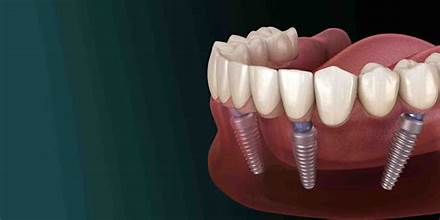HEALTH
How to Get an Hourglass Figure

Achieving an hourglass figure remains a desirable goal for many people, thanks to its classic aesthetic appeal. The distinctive shape, characterized by a narrow waist and proportional curves at the bust and hips, has captivated admirers for centuries. Whether through dietary strategies, exercise plans, or medical solutions, here’s how you can work towards a more balanced and curvaceous silhouette.
Understanding the Hourglass Figure
The hourglass figure is defined by specific proportions: a smaller waist, coupled with shoulders and hips that are roughly equal in width. These proportions create a balanced, visually appealing silhouette. However, not everyone is naturally predisposed to this shape due to genetic differences. Many people fall into other body types such as rectangle, pear, or inverted triangle. Therefore, understanding your own natural body shape helps set realistic expectations and determine which strategies will best emphasize your features.
Diet Strategies for an Hourglass Figure
Diet plays a pivotal role in shaping your body. Here are some dietary strategies that can help you achieve or maintain an hourglass shape:
- Nutritional Balance: Start with a balanced diet rich in proteins, healthy fats, and complex carbohydrates. This balance ensures you have the right nutrients to build muscle in key areas and maintain energy levels throughout the day.
- Protein Intake: Protein is essential for muscle development. Aim to include lean protein sources such as chicken, turkey, eggs, and plant-based proteins like beans and legumes. This will aid in building the muscles that create the shape you desire.
- Healthy Fats and Carbs: Incorporate healthy fats such as avocados, nuts, and seeds, which support hormonal balance. Also, complex carbohydrates like whole grains and vegetables provide sustainable energy.
- Meal Timing: Eat smaller, frequent meals throughout the day to keep your metabolism active and avoid unhealthy snacking.
Exercise Plans to Accentuate an Hourglass Shape
Exercise is critical for sculpting and accentuating the curves needed for an hourglass figure. Key exercises include:
- Strength Training:
- Upper Body: Exercises like push-ups, shoulder presses, and lat pulldowns can broaden the shoulders to create balance with your hips.
- Lower Body: Focus on squats, lunges, and hip thrusts to build the gluteal muscles and add shape to your hips.
- Core: Planks and Russian twists will help tighten your waistline.
- Cardio: Incorporate cardio exercises like running, cycling, or HIIT (high-intensity interval training) to burn excess fat without compromising muscle tone.
- Flexibility: Stretching or yoga is essential for maintaining flexibility and muscle tone, which contributes to a balanced appearance.
These strategies are the foundation for achieving a more curvaceous silhouette naturally. Whether you’re starting from scratch or looking to refine your current figure, these techniques can help you make strides toward your goals.
Shapewear and Fashion Tricks
While diet and exercise can enhance your natural curves, shapewear and clever fashion choices can help you achieve an hourglass figure visually.
- Shapewear: Shapewear is designed to compress and shape specific areas of the body. Waist trainers or corsets create a defined waist, while high-waisted shapewear can smooth and shape your hips. Choose breathable and comfortable fabrics that can be worn for extended periods.
- Wardrobe Tips:
- Belts: Cinching your waist with belts over dresses and tops can instantly accentuate your waistline.
- High-Waisted Bottoms: High-waisted skirts, jeans, and trousers highlight the waist and create the illusion of longer legs.
- Structured Tops: Structured tops and blouses with shoulder padding or puffed sleeves add volume to the upper body, balancing out the hips.
These strategies, combined with smart layering and color combinations, can create a more defined waist and a balanced overall look.
Plastic Surgery Solutions
For those unable to achieve an hourglass figure through lifestyle changes alone, plastic surgery provides a viable solution to sculpt your ideal shape.
- Overview: Plastic surgery can help you achieve the proportions of an hourglass figure more rapidly and with precision. Here are some procedures that can refine your silhouette:
- Liposuction: By removing stubborn fat deposits around the waist or other areas, liposuction helps create a narrower waistline and a smoother contour.
- Breast Augmentation: For those with a smaller bust, breast augmentation can increase volume and create a more balanced upper body to complement the hips.
- Buttock Augmentation: Buttock augmentation, through implants or fat grafting (Brazilian Butt Lift), can enhance the shape and size of the buttocks, making the hips look wider and more defined.
- Combination Surgeries: Procedures like tummy tucks, combined with liposuction, offer a comprehensive solution for individuals seeking dramatic changes to their waistline and overall body contour.
- Consultation Importance: Before opting for any surgical procedure, it’s crucial to consult with a board-certified plastic surgeon. They will assess your goals and medical history to recommend a personalized treatment plan that aligns with your expectations.
Plastic surgery can deliver significant results, particularly when non-surgical methods prove challenging. Be sure to explore all your options and choose the approach that best suits your lifestyle and preferences.
Emotional and Psychological Considerations
Embarking on the journey to achieve an hourglass figure is not just a physical process; it has emotional and psychological dimensions that deserve attention. Here are some crucial aspects to consider:
- Body Positivity: Embrace the concept that beauty comes in many forms, and the goal of achieving an hourglass shape should come from a place of self-love and positivity. Avoid comparing yourself to others and understand that everyone’s journey and results will be unique.
- Self-Compassion: Changing your body takes time and patience. Be kind to yourself during setbacks and celebrate your progress. This is crucial in maintaining motivation and a healthy mindset.
- Realistic Expectations: Set achievable goals based on your starting point and genetics. Understand that non-surgical methods may require consistent effort, while surgical options still necessitate recovery time and lifestyle adjustments.
- Support System: Having supportive friends, family, or a fitness community can make the journey more enjoyable and less stressful. Surround yourself with people who encourage you in your pursuit of a healthier lifestyle.
- Professional Guidance: Consulting fitness trainers, dietitians, and board-certified plastic surgeons can help you set realistic goals, follow safe practices, and ensure that your expectations align with what’s achievable for your body type.
Maintaining a positive attitude and understanding the emotional aspects of your journey will help you cultivate a healthier mindset and achieve your desired shape in a sustainable way. By prioritizing your mental health alongside your physical efforts, you’ll be more equipped to enjoy and appreciate the results.
Conclusion
Achieving an hourglass figure requires a multifaceted approach that considers diet, exercise, and wardrobe tricks, as well as potential surgical options. Understanding the underlying principles of body proportions and using strategies like balanced nutrition and targeted workouts can help you accentuate your natural shape. Shapewear and fashion choices can further refine your look, while plastic surgery offers a personalized solution for those seeking more immediate and precise changes.
However, it’s crucial to approach this journey with self-compassion and realistic expectations. Every body is unique, and it’s essential to prioritize mental health alongside physical transformation. Building a positive support system, celebrating small victories, and consulting with experts can make the journey more enjoyable and sustainable. Remember, your pursuit of an hourglass figure should come from a place of confidence and self-love. With a solution-oriented mindset, you can confidently navigate this transformation and create a silhouette that makes you feel empowered and beautiful.
HEALTH
Dental Implantology Will Always Involve Some Post-Surgery Pain

Are you considering getting dental implants? You’re not alone! Dental implantology is all the rage in dentistry right now, offering a reliable solution for those looking to replace missing teeth. But before you dive into this transformative treatment, there are some truths about post-surgery pain that you should know. Let’s uncover the honest facts about what to expect after undergoing dental implant surgery and how to manage any discomfort effectively.
Dental Implants Are Big in Dentistry Right Now
Dental implants have revolutionized the field of dentistry, offering a permanent and natural-looking solution for missing teeth. This innovative treatment has gained immense popularity in recent years due to its high success rates and long-term benefits.
Unlike traditional bridges or dentures, dental implants provide a stable foundation that mimics the structure of natural teeth. This not only enhances aesthetics but also improves functionality, allowing patients to eat, speak, and smile with confidence. But they do come with some risks – ongoing pain being one of them.
With advancements in technology and techniques, dental implant procedures have become more efficient and comfortable for patients. Accuracy is also vital – don’t end up with a messy operator – the more precise the implanting the better and the less chance of an unfavourable outcome. Yes, dentists can now customize treatment plans to suit individual mouth shapes, ensuring optimal outcomes for each case.
If you’re considering dental implants as a tooth replacement option, consult with your dentist to explore how this cutting-edge solution can transform your smile and overall oral health. An don’t be afraid to come across as a perfectionist – it may be the vibe that gets the very best performance out of your surgery.
All On 4 Are a Comprehensive Replacement Treatment
All On 4 dental implants have revolutionized the world of tooth replacement. This treatment involves securing a full set of new teeth on just four implants per arch. Unlike traditional dentures, All On 4 provides a permanent solution that looks and feels like natural teeth.
With All On 4, patients can enjoy restored confidence in their smile and enhanced chewing ability. The innovative design allows for a comprehensive restoration without the need for individual implants for each missing tooth. According to this dentist who does All On Fours in Lincoln Park, the surgery is usually completed in one day, reducing recovery time.
This advanced technique not only saves time but also reduces costs compared to traditional implant procedures. By strategically placing the implants at specific angles, All On 4 offers stability and support for the entire prosthesis.
All On 4 is an excellent option for those seeking a long-term tooth replacement solution that mimics the function and aesthetics of natural teeth seamlessly.
Yet it’s no secret that dental implant surgery including All On 4 can lead to post-operative pain. Many patients wonder, though, if dentists are always upfront about the discomfort they may experience after the procedure. The truth is, reputable dentists will typically discuss potential post-surgery pain with their patients before moving forward with any treatment.
Are Dentists Ever Honest About Post-Surgery Pain?
Being transparent about what to expect in terms of pain management is crucial for building trust and ensuring patient satisfaction. While some may downplay the discomfort involved in dental implantology, most dentists prioritize honesty and open communication when it comes to discussing post-operative pain.
By setting realistic expectations and providing detailed information on how to manage pain effectively following surgery, dentists can help alleviate concerns and ensure a smoother recovery process for their patients. Remember, it’s always important to have an open dialogue with your dentist about any worries or uncertainties you may have regarding post-surgery pain.
Dental Implantology Is Major Mouth Trauma
Implantology is not for the faint-hearted. It involves major mouth trauma as the dentist must surgically place metal posts into your jawbone to support artificial teeth. This process can cause discomfort and swelling, leading to post-surgery pain that varies from person to person.
The procedure itself may sound intimidating, but it’s essential for those looking to restore their smile and improve oral health. The good news is that advancements in technology have made dental implants more efficient and less invasive than ever before.
While the thought of undergoing such a procedure may be daunting, many patients find that the long-term benefits outweigh any temporary discomfort. Proper pain management techniques can help minimize post-surgery pain, allowing you to recover comfortably and enjoy your new smile sooner rather than later.
Severe Pain May Herald a Dental Emergency
While some post-surgery pain is expected after getting dental implants, severe and persistent pain should never be ignored. If you experience intense discomfort that doesn’t improve with prescribed medication or if you notice any signs of infection such as swelling, fever, or excessive bleeding, If you believe your severe pain may need an urgent solution then it’s crucial to seek immediate help from your dentist, or even go straight to hospital..
Being proactive about addressing severe pain can prevent potential complications and ensure the long-term success of your dental implant procedure. Remember, a trustworthy dentist will always prioritize your well-being and provide honest guidance throughout – and also after – your treatment journey.
Stay informed, stay vigilant, and remember that managing post-surgery pain is an essential part of the dental implant process. Trust in the expertise of your dental care provider to guide you through any challenges you may face along the way, but also trust your own panic button (instincts).
HEALTH
Sleep Soundly: The Ultimate Guide to the Best Oral Appliance for Sleep Apnea

Imagine waking up feeling refreshed, energized, and ready to tackle the day ahead. Sleep apnea no longer has to dictate the quality of your sleep or your life.
With the right dental appliances, you can say goodbye to sleepless nights and hello to peaceful slumber. But with so many options on the market, how do you know which one is right for you?
Don’t worry, we’re here to help! In this guide, we’ll take a deep dive into the best oral appliance for sleep apnea to help you make an informed decision.
Ready for a sound sleep that rejuvenates your body and mind? Let’s dive in!
Mandibular Advancement Devices
MADs are the most commonly recommended oral appliance for sleep apnea. They work by gently shifting your lower jaw forward, which helps to keep your airway open while you sleep.
This prevents the collapse of soft tissue at the back of your throat that causes snoring and obstructive sleep apnea. MADs are easy to use, customizable, and often more effective than other types of oral appliances.
Tongue Retaining Devices
For those who prefer not to have anything in their mouth while sleeping, TRDs are a great alternative. They work by holding the tongue in place to prevent it from falling back and blocking the airway.
They are also more compact and portable than MADs, making them a great option for travel. However, they can be a bit uncomfortable at first and not be as effective for more severe cases of sleep apnea.
Continuous Positive Airway Pressure Masks
CPAP masks are often the first line of treatment for sleep apnea. They work by delivering a continuous stream of air through a mask, keeping your airway open while you sleep.
While effective, CPAP masks can be bulky and uncomfortable, making it difficult for some people to adjust to wearing them every night. Additionally, they may not be a viable option for those who frequently travel.
Adjustable Airway Pressure Devices
Similar to CPAP masks, adjustable airway pressure devices deliver a constant stream of air, but with the added ability to adjust the air pressure. This can be beneficial for those who have trouble tolerating high pressures and experience discomfort or dry mouth.
Plus, they are more compact than CPAP masks, making them easier to travel with. However, they may not be as effective as other options for those with serious cases of sleep apnea.
Custom-Fitted Dental Mouthpieces
These are the most expensive and time-consuming options, but also the most effective for acute cases. A dentist will take impressions of your teeth and create a customized mouthpiece that holds your jaw in a forward position while you sleep.
This helps to keep your airway open without the need for bulky equipment or uncomfortable straps. However, it may not be covered by insurance and requires regular check-ups for adjustments.
Those seeking personalized treatment might explore solutions like this oral appliance therapy in Pasadena, CA. They offer customized devices designed to fit your needs and improve the quality of your sleep.
Exploring the Best Oral Appliance for Sleep Apnea
Choosing the best oral appliance for sleep apnea is a significant step towards better sleep and improved health. Remember, the right device is the one that you feel comfortable using every night.
Consult with a sleep specialist or a dentist experienced in this treatment to find your ideal match. Ready to reclaim your night’s rest and transform your days? Explore your options today and wake up to a brighter, more vibrant tomorrow.
Did you find this article helpful? Check out the rest of our blog now for more!
HEALTH
The Importance of Personalized Treatment Plans in Intensive Inpatient Therapy

Have you or a loved one ever needed help that felt truly tailored just for you?
In the world of mental health, one size hardly fits all, which is why the concept of personalized treatment plans in intensive inpatient therapy is changing lives. Imagine a plan that understands your unique struggles, strengths, and goals.
This article dives into why personalized plans are not just beneficial but essential in intensive inpatient therapy, offering a beacon of hope for those seeking a path to recovery.
Tailored Approach
A tailored approach in therapy means the treatment is made just for you. It looks at what you need and what your goals are. This way, you get help that truly fits what you’re going through.
When therapy fits your needs, you might feel better faster. It’s because every part of your treatment is chosen to help you the most.
Holistic Care
Holistic care entails considering a person’s health from all angles, not just one. It includes the health of your mind, body, and emotions. This method helps make sure that all the things that might affect a person’s healing are thought about.
When someone is in intensive hospital therapy, holistic care can include a lot of different types of intense treatment. This could be going to talk therapy, working out, or learning new ways to calm down. These all help the person get better as a whole.
Increased Engagement
When therapy is personalized, patients are more likely to get involved in their treatment plans. They feel that their views and preferences are heard and valued. This leads to a stronger commitment to attending sessions and following through with the treatment plan.
Increased engagement means patients play an active role in their recovery process. They work closely with their therapists to set goals and achieve them, making progress more visible and meaningful.
Efficient Resource Allocation
Efficient resource allocation ensures that the treatment resources are used in the best way possible. This approach aims to maximize the benefits to the patient while minimizing waste. It means every aspect of the therapy, from the time spent with therapists to the use of therapy tools, is optimized for effectiveness.
This method helps both the therapy providers and the patients. Providers can offer high-quality care without unnecessary expenditures, and patients receive focused treatment that is more likely to lead to successful outcomes. If individuals require continued support after intensive inpatient therapy, read this guide to IOP (Intensive Outpatient Program) for seamless transition and ongoing care.
Flexibility and Adaptability
Personalized intense therapy depends on being able to change and adapt. With this method, the treatment plan can be changed as the patient’s needs change over time. It makes sure that the therapy stays useful and helpful while the person is recovering.
This ability to change is very important for dealing with problems or changes in a patient’s state that come out of the blue. It lets doctors change their methods to best help the patient’s growth, making sure that they keep making progress toward their recovery goals.
Intensive Inpatient Therapy Leads the Way.
In conclusion, intensive inpatient therapy stands out as a powerful tool for healing and growth. This approach provides personalized, holistic care that can meet each person right where they are in their mental health journey.
With a focus on fitting the therapy to the person, not the other way around, it opens the door to a brighter, healthier future for those who take part.
If you gained new insights from this article, be sure to explore our blog for more enlightening content.

 TECHNOLOGY4 months ago
TECHNOLOGY4 months agoBlog Arcy Art: Where Architecture Meets Art

 ENTERTAINMENT1 week ago
ENTERTAINMENT1 week agoExploring the Kristen Archives: A Treasure Trove of Erotica and More

 ENTERTAINMENT4 days ago
ENTERTAINMENT4 days agoKiss KH: The Streaming Platform Redefining Digital Engagement and Cultural Currents

 LIFESTYLE4 months ago
LIFESTYLE4 months agoThe Disciplinary Wives Club: Spanking for Love, Not Punishment

 LIFESTYLE1 week ago
LIFESTYLE1 week agoWho Is Sandra Orlow?

 GENERAL4 months ago
GENERAL4 months agoWhat are stories of male chastity? A Comprehensive Guide

 EDUCATION4 days ago
EDUCATION4 days agoLingrohub Platform: A Complete Student Access Guide

 ENTERTAINMENT4 weeks ago
ENTERTAINMENT4 weeks agoMonkeyGG2: Your Personal Gaming Hub









